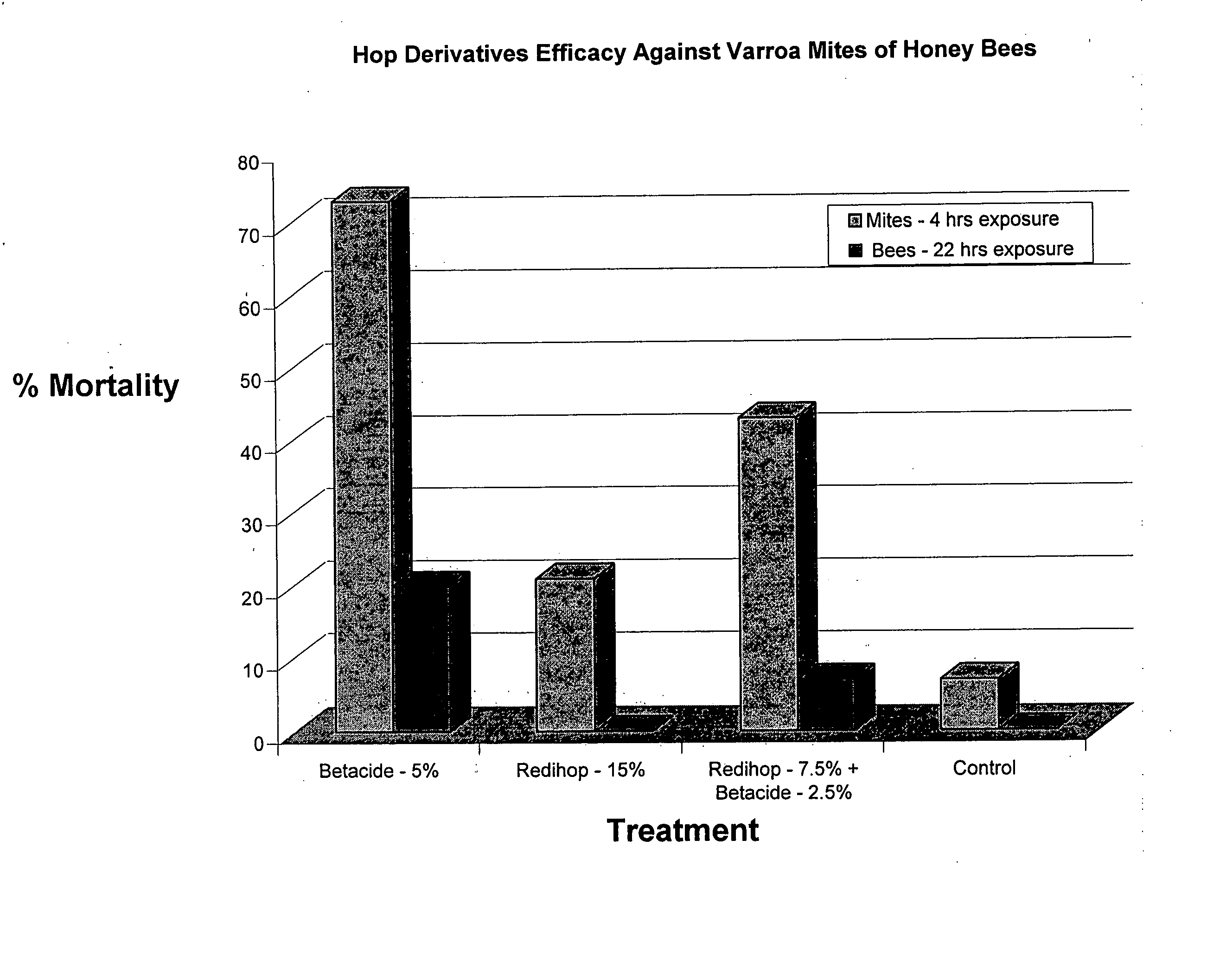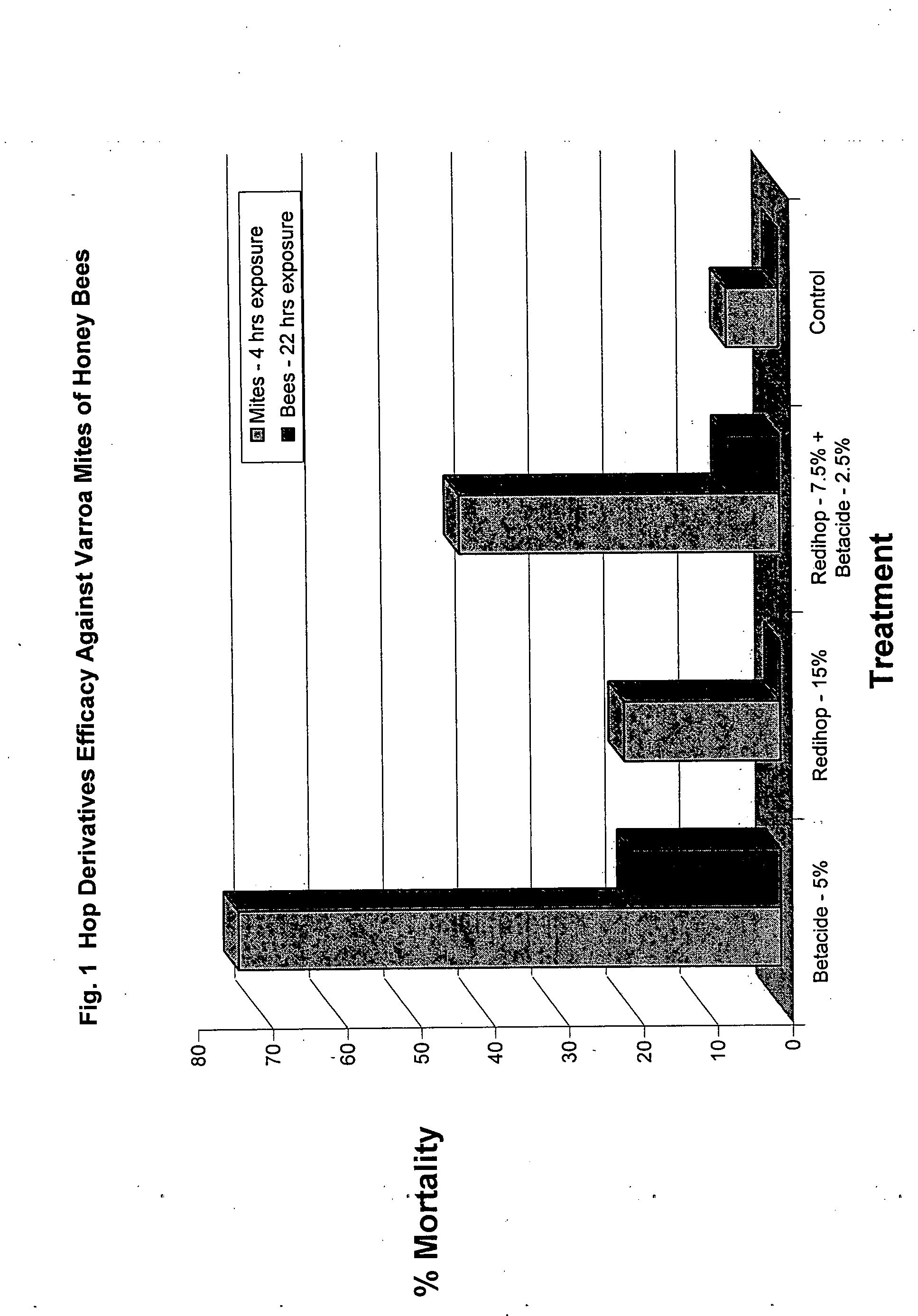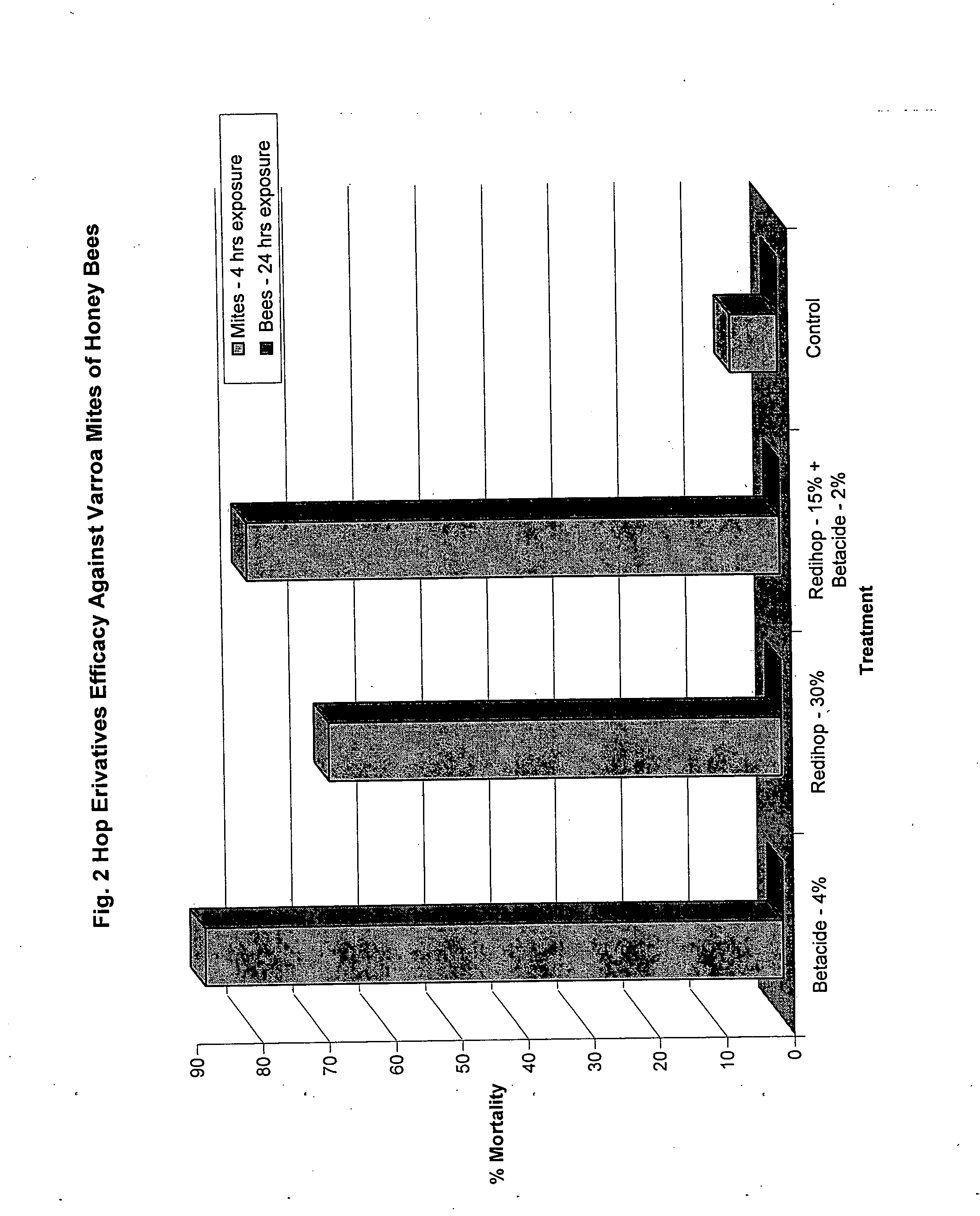Compositions and methods for controlling a honey bee parasitic mite
a technology of honey bees and mites, applied in the field of compositions and methods for controlling a honey bee parasitic mite, can solve the problems of colony-level mortality, weak immune systems of hosts, and weakened immunity of host immune systems, so as to reduce the success, stabilize, or slow down the growth of a mite population
- Summary
- Abstract
- Description
- Claims
- Application Information
AI Technical Summary
Benefits of technology
Problems solved by technology
Method used
Image
Examples
example 1
Hop Beta and Alpha Acids Used in Miticide Screening
[0089] Beta acids, alpha acids, and a combination of beta and alpha acids were screened for efficacy as miticides. Liquid test products containing beta acids were provided in a Betastab 10A® formulation (10% beta acids) hereinafter called “Betacide”. Liquid test products containing alpha acids were provided in a Redihop® formulation (30% rhoisoalpha acids), Isohop® formulation (30% isoalpha acids), Tetrahop Gold® formulation (9% tetrahydroisoalpha acids), Hexahop Gold® formulation (5% hexahydroisoalpha acids and 5% tetrahydroisoalpha acids). A combination of alpha and beta acids were prepared by mixing equal parts Redihop® and Betacide. Powdered test products containing beta acids were provided by a magnesium salt formulation of beta acids. Powdered test products containing alpha acids were provided by magnesium salt formulations of Redihop®, Tetrahop Gold® and Hexahop Gold®.
[0090] Tests were carried out using the concentrations o...
example 2
Miticidal Effect of Hop Acids in Simulated Apiary Assays
[0105] In the apiary, a bee brush was used to gently sweep bees into a ½ cup measuring cup. To prevent them from flying, the side of the bee brush was used as a lid over the cup. The 2 cup of bees was transferred to a ½ pint or pint Mason jar with a screened lid (i.e., a sugar shake jar). One jar containing a ½ cup of bees was used per container of treatment.
[0106] The containers were prepared by inserting a screen at the opening of the container and placing a cut piece of sticky board in the lid of the container. The lids were attached to the containers and the containers were turned upside down so that from bottom to top there was a lid, sticky board, and screen. A #5 rubber cork was placed in one of the two feeding holes. One jar of bees was placed briefly into the −20 freezer. The bees remained in the freezer until bee movement slowed considerably (3 to 5 minutes). At this point the bees were ready for painting using Bee ...
example 3
Sodium and Magnesium Salts of Hop Acids Kill Mites
[0109] Tests using the powdered hop products (magnesium salts) were conducted by spreading test powder evenly over filter paper in a Petri dish. The MgBeta test powder contained a 1:1 mixture of 0.25 g of magnesium salt of beta acids (52% magnesium beta salts of hop acids) and corn starch; thus, 26% magnesium salt of beta acids was used in the assay. The NaBeta test powder contained a 1:1 mixture of 0.25 g of sodium salt of beta acids (6.4% sodium salt of beta acids); thus, 3.2% magnesium salt of beta acids was used. Varroa mites were placed on the treated filter paper and mite survival was determined at one, two, three, four or five hours following exposure. Results are shown in Table 2.
TABLE 2MITE BIOASSAY - 0.25 g TreatmentDate# Hours ExposureTreatment% MortalityMar. 28, 20071MgBeta4.8NaBeta15.1Cornstarch0Control02MgBeta9.5NaBeta45.2Cornstarch0Control11.13MgBeta14.3NaBeta45.2Cornstarch0Control11.14MgBeta28.6NaBeta75.4Cornstarch...
PUM
 Login to View More
Login to View More Abstract
Description
Claims
Application Information
 Login to View More
Login to View More - R&D
- Intellectual Property
- Life Sciences
- Materials
- Tech Scout
- Unparalleled Data Quality
- Higher Quality Content
- 60% Fewer Hallucinations
Browse by: Latest US Patents, China's latest patents, Technical Efficacy Thesaurus, Application Domain, Technology Topic, Popular Technical Reports.
© 2025 PatSnap. All rights reserved.Legal|Privacy policy|Modern Slavery Act Transparency Statement|Sitemap|About US| Contact US: help@patsnap.com



